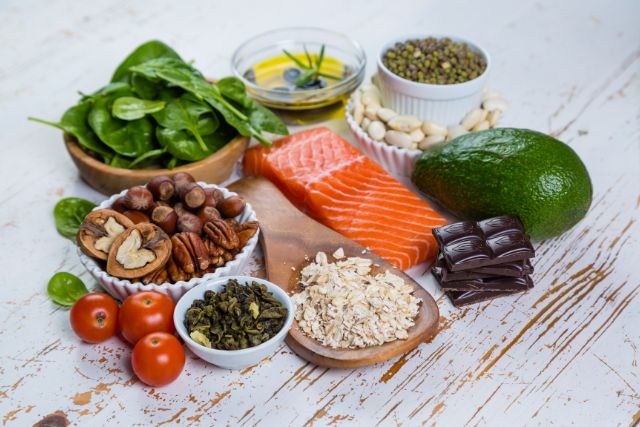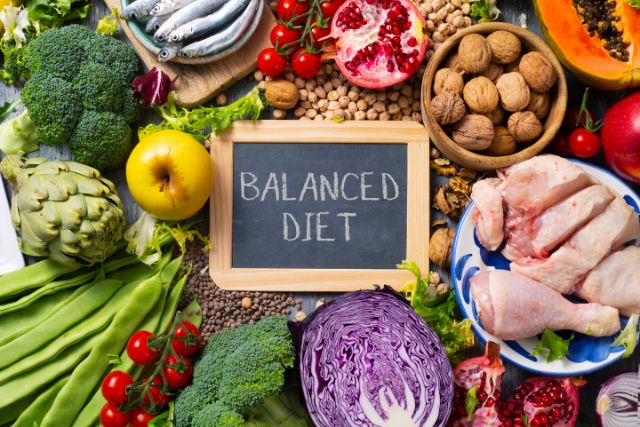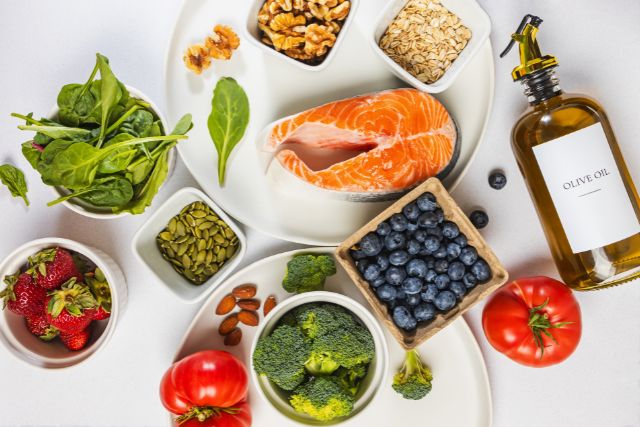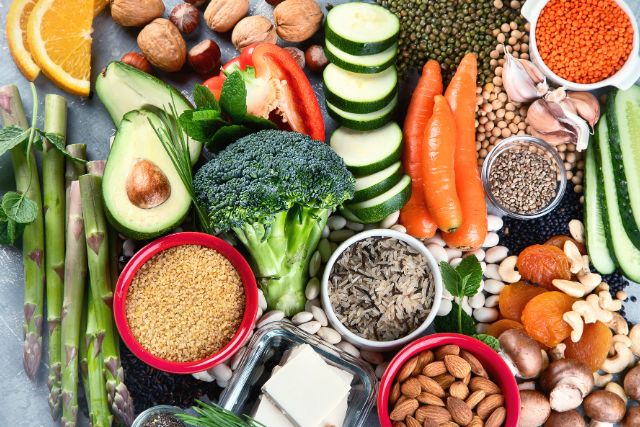Recent Posts
-

- Diabetes-Friendly Nutrition: Smart... 08.12.2024
-

- Nutrition for Chronic... 08.12.2024
-

- Anti-Inflammatory Diet: Food... 08.12.2024
-

- Low-Sodium and Heart-Healthy:... 08.12.2024
-

- Plant-Based Diets for... 08.12.2024
Supercharge Your Plate: The Outstanding Benefits of Blueberries and Greens

When we eat, we want to get the best of the best nutrients possible. That's why we tend to eat portions of food that provide different vitamins and minerals. If you like to eat blueberries and greens, do you know what benefits this food gives you? If not, let's explore the benefits of these foods.
Blueberries are plump, sweet, and juicy, with a color that ranges from indigo to deep purple. It is one of the tiniest fruits, but don't let their small size fool you. This summer berry contains antioxidants and vitamins and is the perfect choice for a healthy snack. It can also be used in sweet and savory recipes to add a burst of unexpected flavor.
On the other hand, Leafy greens is a broad term for plant leaves eaten as a vegetable containing many nutrients. There are various tastes and textures of leafy greens; depending on the type, they may taste better eaten raw or cooked. Spinach and lettuce taste sweeter and are more tender, kale and Swiss chard are tougher, and mustard greens taste more bitter.
This food can be eaten as a snack or part of a dish, making it better. Other than that, here are the outstanding benefits of blueberries and greens.
May be protective
Blueberries have one of the highest antioxidant levels among consumed fruits and vegetables. This is typically referred to as the ORAC score. They are rich in naturally occurring plant compounds called phytochemicals, such as ellagic acid and anthocyanidins. These phytochemicals are responsible for the berry's blue, indigo, and red coloring. They have also been extensively researched for their protective properties.
It may help manage blood pressure.
Research has shown that anthocyanidins, which are found in berry fruits, may support the cardiovascular system. They do this by supporting the health of blood vessels and reducing the arterial stiffness associated with aging. This is especially useful for post-menopausal women.
It may help reduce the risk of heart disease.
In conjunction with helping manage blood pressure, the phytochemicals in blueberries have been seen to prevent oxidative damage to cholesterol. Observational studies also suggest that diets rich in anthocyanins may help lower the risk of heart attacks. However, more studies are needed to confirm these findings.
It may help regulate blood sugar.
Blueberries are both low in sugar and a good source of fiber; as a result, they have a low glycemic index (GI). This and their high flavonoid content may help improve insulin sensitivity, which is essential for managing blood sugar levels.
It may help maintain eye health.
Including blueberries in your diet regularly may improve vision and guard against age-related macular degeneration. This is thanks to the improved blood and oxygen flow to the eyes and the antioxidant protection that may help reduce the likelihood of cataracts and macular degeneration.
Green Veggies Support Optimal Brain Function
A study found that people who ate the most leafy greens each day had slower cognitive decline rates than those who ate the least. The leafy green-eaters had the memory equivalent of someone 11 years younger. This was even true after adjusting for other factors, including lifestyle, education, and overall health.
Organic vegetables contain high levels of folate (B9). B vitamins facilitate the production of neurotransmitters in the brain. Folate is found in leafy green vegetables such as spinach, broccoli, and lettuce, as well as in lemons, bananas, and melons.
Leafy Greens Reduce Belly Bloating
Leafy greens contain high amounts of potassium, a mineral, and an electrolyte. Potassium is essential to keep an optimal fluid balance in your body. A diet high in sodium can trigger or worsen bloating. It must be kept in check by adequate potassium intake – roughly 4,700 mg/day according to the USDA's Dietary Guidelines.
Green Leafy Veggies Make Your Skin Glow
Beta-carotene, a form of vitamin A, is the plant pigment we associate with carrots and other yellow-orange veggies. It is also hiding in leafy greens. It can support a youthful glow in your skin and even works from the inside out as a natural sunscreen, protecting your skin from harmful UV rays. Kale is one of the best sources of beta-carotene, and research shows that cooking, juicing, or dehydrating kale helps your body better absorb beta-carotene.
Leafy Greens Relieve Stress
A big green smoothie is a great way to start your and relieve stress; dark leafy greens are an excellent source of folate, which helps your body produce mood-regulating happy hormones such as dopamine and serotonin. Additionally, the magnesium found in leafy greens can help support cardiovascular health.
Leafy Green Vegetables Support Bone Health
Moreover, research has shown that milk consumption has no protective effect on fracture risk and may even increase the risk of hip fractures among women. That's yet another great reason to ditch dairy for good. You can get plenty of calcium for optimal bone health from eating leafy greens. Green veggies such as broccoli and kale contain high amounts of the all-important vitamin K, which promotes the formation of proteins that build bones and clot your blood.
Disclaimer: The information provided in this article is for general information purposes only. All information in this article is sourced from other websites, and we do not represent any rights regarding the contents and information on the site. All rights belong to their original owner.
Sources:





